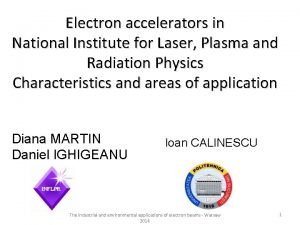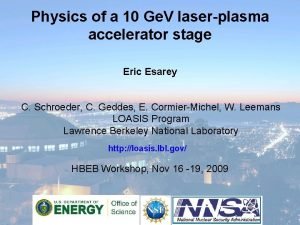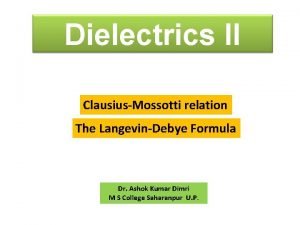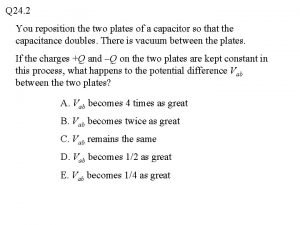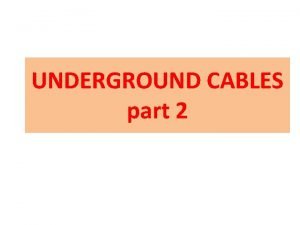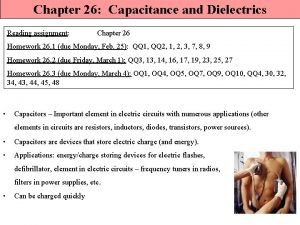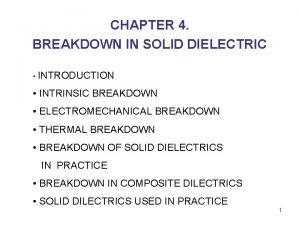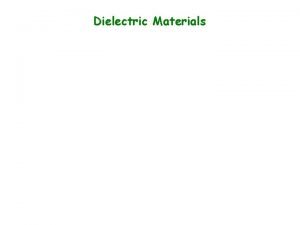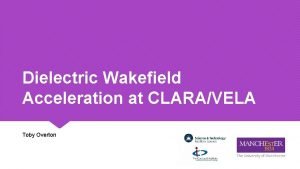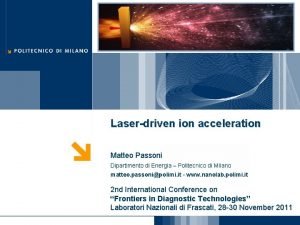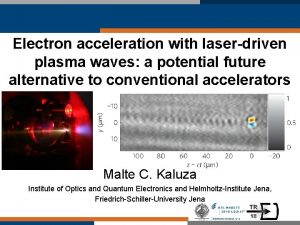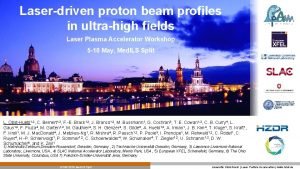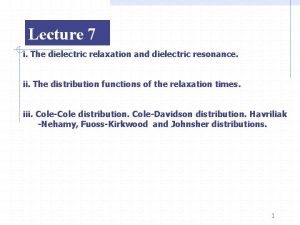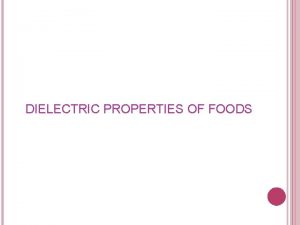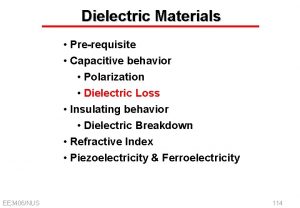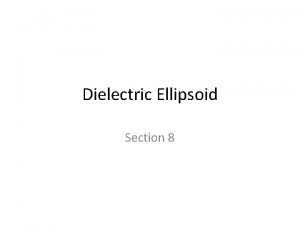Dielectric Laser Acceleration Dielectric Laser Acceleration DLA laserdriven













- Slides: 13

Dielectric Laser Acceleration

Dielectric Laser Acceleration (DLA) laser-driven microstructures • lasers: high rep rates, strong field gradients, commercial support • dielectrics: higher breakdown threshold higher gradients (>1 GV/m), leverage industrial fabrication processes bonded silica phase reset accelerator prototypes fabricated at SLAC/Stanfor d gradient lower cost, more compact, higher gradient "Accelerator-on-a-chip" Observed electron energy modulation from laser interaction (Dec. 2012) Wafer is diced into individual samples for e-beam tests.

Recently Fabricated Prototypes Enhanced Dual-Grating Silica Structures (one half shown only) Multi-length SLAC/Stanford E 163: - Multi-length gratings - 1 x 400 nm gap - 1 x 800 nm gap - 1 x 1200 nm gap - 1 x test structure - Symmetric process - Alignment channels - IR reflectors (for laser alignment) 400 nm gap Micro-Accelerator Platform UCLA MAP (G. Travish) - Initial prototypes recently completed and tested at SLAC.

DLA Results to Date Fabrication of DLA Accelerators & Sub. Components • Fabrication of first demonstration-ready grating accelerator prototype (Aug 2011). • Completed the first fully assembled 17 -layer silicon woodpile accelerator (June 2012). Simulation and Theory • Simulation of high-efficiency (>95%) waveguide coupling technique (June 2012). • Simulation of particle transport through many-period optical structures (Dec 2012). • Design of novel DLA-based high-resolution beam position monitor (March 2012). Benchtop and Electron Beam Testing • Attosecond microbunching and net acceleration with ITR foil (2008). • Detailed IR damage studies performed to identify robust materials (2009 -2012). • Demonstration of TM mode excitation in a photonic crystal accelerator (2011). • First powered acceleration tests of completed DLA prototypes (2011 -2012). • First observation of acceleration in a DLA structure! (Dec 2012). 4

Pulse Format Optical structures naturally have sub-fs time scales and favor high repetition rate operation

DLA Collider Concept 5 fiber lasers per 6'' wafer module 2 k. W per laser concept for 1 DLA accelerator structure (E. Peralta) e. Thulium fiber laser λ =2 µm Interaction Point 1. 5 Te. V 3. 75 km 62, 000 lasers needle emitter and injector module accelerator wafers final focus and steering wafers fiber laser feeds tungsten field emission tip design (P. Hommelhoff) Loop period=beam repetition rate single 6'' accelerator wafer 5 modules per wafer 5 fiber feeds per wafer Phase control 40 stages per module 1 module = 40 mm long 1 stage = 750 µm long

Strawman Parameter Table

DLA Test Facility at SLAC E 163 @ NLCTA: A facility for testing laser-driven accelerator structures. Beam energy = 60 Me. V; σ t = 1 ps; σ E = 0. 1%; 800 nm Ti: Sapph laser Ce: YAG Class 10, 000 Laser Room Control Room PI-MAX 3 Intensified CCD NLCTA Beamline ~10 m

Future Test Facility Requirements Traditional RF electron sources can be used for proof-of-principle experiments, but demonstrating future multi-stage devices will require new capabilities e-Beam Requirements nm-scale emittance attosecond optical bunching laser triggered, 1000 e-/bunch 1 Me. V energy Laser Requirements 1 -2 um wavelength Tuneable pulse length (100 fs to 5 ps) 1 -50 MHz rep rates, modelocked >1 u. J pulse energy Possible Approaches • adapted TEM source • needle-tip field emitter + low-beta pre-injector Other Desirable Features: • Thulium-doped fiber laser R&D • Amplified Erbium-doped lasers • proximity to nanofabrication facilities • strong university participation & collaboration • national lab accelerator expertise

Unique testing needs for DLAs • Optical phase synchronization over km-scale lengths • nm-scale structure alignment over km-scale lengths • Laser pulse shaping to compensate for beam loading • Measurement of radiation damage to optical materials • Several m of test beam line for testing optical focusing schemes

5 -Year Roadmap Draft of funding profile for a multi-institution research program to develop a scalable DLA design on a 5 -year time scale.

Roadmap Goals by Year

Risk Assessment Issue Risk Time Scale to Solve Pulsed e- sources with nm emittance Medium 5 years Pulsed e+ sources with nm emittance High Unknown Technology still in proof of principle stage Medium 1 -2 years Sub-micron co-alignment over 7 km Medium 5 years (see LIGO) Developing near 100% efficient power distribution capability Medium 5 -10 years Availability of suitable laser sources Low Combined technology demonstration (e. g. High via a scaled-down test facility) 3 years 5 -10 years depending on funding & effort
 Dielectric laser accelerator
Dielectric laser accelerator Laser wakefield acceleration
Laser wakefield acceleration Angular acceleration and linear acceleration
Angular acceleration and linear acceleration Is radial acceleration the same as centripetal acceleration
Is radial acceleration the same as centripetal acceleration Angular acceleration and linear acceleration
Angular acceleration and linear acceleration Vertical net
Vertical net Tangential acceleration and centripetal acceleration
Tangential acceleration and centripetal acceleration Dielectrics have free electrons
Dielectrics have free electrons Langevin-debye equation derivation
Langevin-debye equation derivation You reposition the two plates of a capacitor
You reposition the two plates of a capacitor Characteristics of cable
Characteristics of cable Capacitor reading
Capacitor reading Solid dielectrics used in power apparatus
Solid dielectrics used in power apparatus Lead magnesium niobate/lead titanate
Lead magnesium niobate/lead titanate
